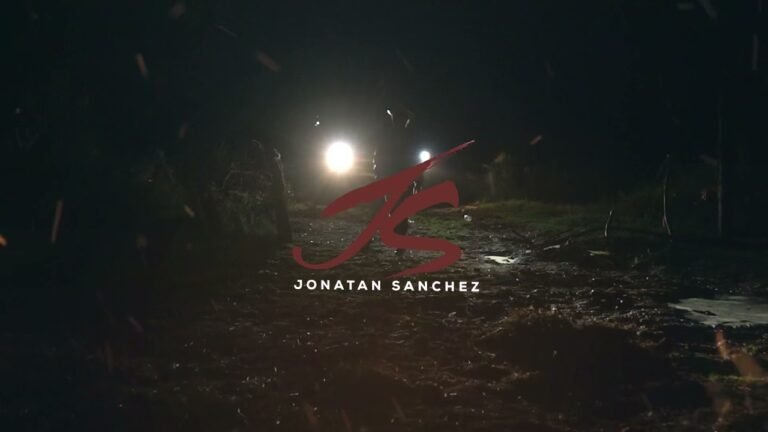Understanding the Meaning of Moab
Moab, a name that resonates with both adventure and history, holds a rich tapestry of meanings across different cultures and contexts. Often associated with the stunning landscapes of Utah, where the Moab Desert beckons outdoor enthusiasts, the term also carries biblical significance, referring to an ancient kingdom. This multifaceted word embodies not only geographical allure but also a deeper connection to stories of resilience and exploration. Understanding the moab meaning opens a window into a world where nature meets heritage, inviting curiosity and discovery.
What is the slang meaning of Moab?
Moab, in slang, refers to the “Mother of All Bombs,” an unofficial acronym that emerged from a historical context. This phrase cleverly plays on Saddam Hussein’s exaggerated declaration of the “Mother of All Battles,” which he used to rally his forces against Western allies. The term not only captures the immense power of the bomb but also highlights the dramatic rhetoric of conflict.
The use of Moab in this way reflects a broader tendency in language to create impactful expressions that resonate with cultural and political narratives. By invoking a phrase that suggests overwhelming might, the acronym has transcended its military origins, becoming a symbol of both destruction and the complexities of warfare. It serves as a reminder of how language evolves, often intertwining with significant events to create memorable and poignant expressions.
What is the spiritual meaning of Moab?
Moab carries a dual spiritual significance, encapsulating both the physical and the potential for goodness. The term translates to “seed of the father,” suggesting a deep connection to lineage and the essence of creation. This connection emphasizes the importance of heritage and the continuation of life through familial bonds, highlighting the foundational role of the father in shaping identity and purpose.
On a more tangible level, Moab symbolizes the body and the external conditions of existence. It serves as a reminder that life is not solely about the spiritual or ethereal but also encompasses the material world we inhabit. This aspect invites reflection on the relationship between our physical experiences and our spiritual growth, urging individuals to find meaning in their surroundings while acknowledging life’s challenges.
However, within this external representation lies the potential for goodness and transformation. Moab suggests that even the most earthly and mundane aspects of life can be avenues for spiritual development. Embracing this possibility encourages individuals to seek the inherent goodness in their experiences, fostering a sense of hope and purpose in their journey through life.
What does Moab refer to in the Bible?
In the biblical narrative, Moab originated from an unsettling chapter in the aftermath of Sodom and Gomorrah’s destruction, when Lot’s elder daughter bore a son through incest with her father. This son, named Moab, became the ancestor of the Moabites, a people often mentioned in the scriptures alongside the Ammonites, who were descended from Lot’s younger daughter. The story serves as a poignant reminder of the complex and often troubling origins of nations within the biblical context, highlighting themes of morality, survival, and the intricate family dynamics that shaped ancient communities.
Exploring the Historical Significance of Moab
Moab, a region steeped in rich history, offers a fascinating glimpse into the past. Nestled between the towering red rock formations and the majestic Colorado River, this area served as a vital crossroads for ancient civilizations. The remnants of Native American dwellings and rock art reveal a culture deeply connected to the land, showcasing their ingenuity in thriving amidst the harsh desert environment. As settlers and explorers traversed this rugged terrain, Moab became a critical stopover for those seeking adventure and opportunity in the American West.
During the late 19th and early 20th centuries, Moab transitioned from a Native American stronghold to a thriving hub for mining and agriculture. The discovery of uranium and other minerals transformed the local economy, drawing workers and their families to the area. This influx spurred the development of infrastructure, leading to the establishment of schools, businesses, and a sense of community that still resonates today. The stories of those early pioneers and their resilience in the face of adversity continue to shape Moab’s identity.
In recent years, Moab has evolved into a world-renowned destination for outdoor enthusiasts, attracting visitors with its breathtaking landscapes and recreational opportunities. While the modern economy largely relies on tourism, the historical significance of Moab remains palpable. The preservation of ancient sites and the promotion of local history foster a deeper appreciation for the region’s past, ensuring that future generations can learn from the rich tapestry of cultures that have called Moab home. This blend of history and adventure creates a unique narrative that captivates all who venture into this remarkable area.
Moab: A Journey Through Time and Culture
Nestled between majestic red rock formations and the serene Colorado River, Moab is a captivating blend of natural beauty and rich cultural heritage. This vibrant town, known for its breathtaking landscapes and outdoor adventures, serves as a gateway to two iconic national parks: Arches and Canyonlands. As you explore the ancient petroglyphs etched into the cliffs and the remnants of early Native American settlements, you’ll discover the deep-rooted history that has shaped this unique region. Coupled with its thriving arts scene and local cuisine, Moab invites visitors to not only witness its stunning vistas but also to immerse themselves in a tapestry of stories that span thousands of years.
The Rich Tapestry of Moab’s Legacy
Moab’s legacy is woven from a rich tapestry of cultural influences, breathtaking landscapes, and enduring traditions. Nestled between the iconic red rock formations of southeastern Utah, this vibrant town has long been a crossroads for adventurers, artists, and settlers. The interplay of Native American heritage, pioneer history, and contemporary outdoor recreation creates a unique narrative that captivates visitors and locals alike. From ancient petroglyphs etched into canyon walls to modern art galleries showcasing local talent, Moab reflects a dynamic blend of past and present.
As outdoor enthusiasts flock to the area for its world-renowned hiking, biking, and rock climbing opportunities, Moab also serves as a hub for environmental stewardship and conservation efforts. The surrounding national parks, including Arches and Canyonlands, protect the stunning geological wonders that define the region. Community events, such as art festivals and cultural celebrations, further enrich the local experience, fostering a deep sense of connection among residents and visitors. In Moab, the legacy of the land and its people intertwines, creating a vibrant community that honors its roots while embracing the future.
Unveiling Moab: Myths, Facts, and Insights
Nestled in the heart of Utah, Moab is a captivating destination that blends breathtaking landscapes with rich history. Often shrouded in myths of wild adventures and hidden treasures, this vibrant town serves as a gateway to some of the most stunning national parks in the United States. Visitors are drawn not only by its iconic red rock formations and thrilling outdoor activities but also by the stories of ancient Native American cultures that once thrived in the region. As travelers explore Moab’s dramatic scenery, they uncover a tapestry of natural wonders and human history that invites deeper reflection.
Beyond its picturesque vistas, Moab is a hub of environmental stewardship and community spirit. The town boasts a vibrant arts scene, with local artisans showcasing their work and festivals celebrating the unique cultural heritage of the area. While outdoor enthusiasts flock to its trails and rivers, Moab also encourages visitors to engage with its conservation efforts, promoting sustainable tourism that respects the fragile ecosystems surrounding it. By embracing both the myths and the realities of Moab, one can truly appreciate the multifaceted nature of this enchanting destination, where adventure and preservation coexist harmoniously.
Moab’s Role in Ancient Narratives and Modern Interpretation
Moab, a region steeped in ancient history, plays a significant role in biblical narratives and other historical texts. Often depicted as a land of conflict and contrast, it was home to the Moabites, a people whose interactions with the Israelites shaped much of the Old Testament’s storyline. Key events, such as the encounters between Ruth and Naomi, illustrate not only personal relationships but also the broader themes of loyalty and redemption that resonate throughout the scriptures. This ancient land, marked by its rugged landscapes and rich cultural heritage, continues to intrigue scholars and enthusiasts alike.
In modern interpretation, Moab serves as a lens through which we explore themes of migration, identity, and cultural exchange. As contemporary discussions about borders and belonging gain prominence, the stories of Moab offer valuable insights into the complexities of human relationships across divides. The region’s enduring legacy invites us to reflect on the interconnectedness of past and present, encouraging a deeper understanding of how ancient narratives can inform current perspectives on community and resilience.
Understanding the meaning of moab opens doors to a rich tapestry of cultural and historical significance. Whether it refers to the ancient kingdom, the modern-day recreational haven, or the many interpretations that resonate with different communities, this term encapsulates a blend of heritage, adventure, and exploration. Embracing its multifaceted nature invites us to delve deeper into the stories and experiences that shape our world, reminding us of the connections we share across time and space.







